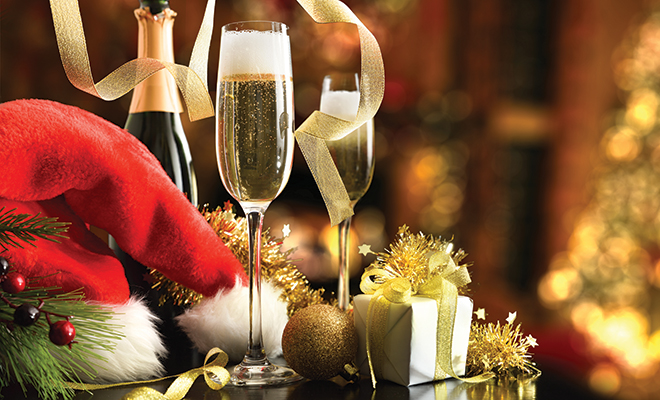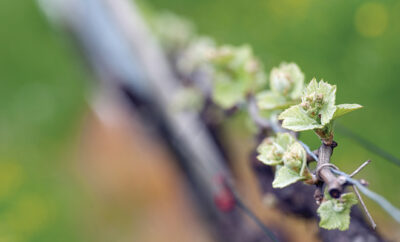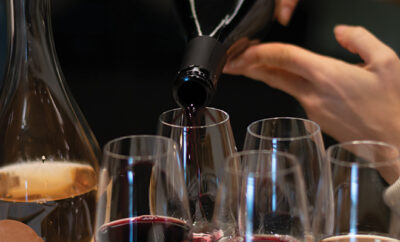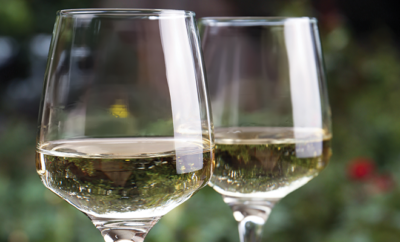
Sparkling Wines: ’Tis the Season
Cheers! It’s approaching the time of year when we close out the successes of one year and plan for the adventures of the next one. Worldwide, there’s a tradition of crossing from one year to the next, celebrating what’s to come with family and friends. Any way you pour it, this celebration often includes a special beverage, punch or bubbly!
The traditional celebratory beverage in my family was always champagne. The holidays were the one time of year when the extravagance of champagne was accepted, almost encouraged. Champagne was considered an extravagance because it wasn’t the everyday beverage or cocktail and was instead revered as a symbol of success, comfort or good cheer. The pop of the champagne cork is a universal symbol for good-times. Whenever you hear the signature pop, don’t you glance around for just a moment wondering who or what the fuss is for?
We used to think that sparkling wines could only come from lands far away, but look no further than your market to find sparkling wines from Venezuela, Spain, Italy, France, Germany and California regions of Lodi, Amador, Clarksburg, Paso Robles and Napa.
Sparkling Wines or Champagne?
Sparkling wines are wines that have undergone a second fermentation caused by additional yeasts and carbon dioxides for effervescence. You can find sparkling wines at your local market or convenience store, but pay attention to a key word: Champagne. Sparkling wines that derive from the original region of Champagne, France, are called Champagne and are strictly created by methode Champenoise, the original method accredited to the Benedictine monk Dom Perignon (1638-1715), who, along with his countrymen, initially viewed the accidental bubbles from secondary fermentation as a flaw! But in 1839 modern development of champagne overcame the obstacles of exploding bottles and inconsistency with the dedication of Veuve Clicquot, Charles Krug and others. The shape of the champagne bottle is mostly traditional, but it was indeed necessary for the bottle to be made of very thick glass with gentle shoulders and a deep punt (indentation at the bottom of the bottle) to contain the increasing champagne pressure.
Is Italian Prosecco a sparkling wine? Absolutely. But it is not champagne. Prosecco is a very dry white sparkling wine in which yeasts are added to the entire barrel or volume of wine, then bottled into the classic sparkling wine bottle before corking and labeling. Conversely, when champagnes and other sparkling wines are made, each bottle is filled with already-fermented wine; then the additional yeasts are added per bottle, and corked for an initial period of nine months or more. During this aging, the wine is turned ever so slightly to keep the yeast from settling. After the designated period of time, the cork ends of the bottles contain yeast sediments that are frozen, uncorked, then recorked quickly. The champagne has undergone its secondary fermentation and is now naturally highly carbonated and corked with extreme pressure. A quality flute of champagne may have fifteen million bubbles; a Prosecco may have fewer bubbles by volume that dissipate much quicker than champagne’s seemingly endless supply.
Broadening our taste, we see lovely offerings made from Viognier, Chenin Blanc, Moscato, Chardonnay and red varietals of Tempranillo, Sangiovese and Pinot Noir. In addition to the usual mimosas for brunch, sparkling wines are ideal to start your appetizer course as an elegant way to cleanse one’s palate or when guests first arrive to your soirée. Poultry courses such as pheasant and turkey go very well with the crisp dry finish of sparkling wines. If you opt to do your holiday dining in four-star restaurants, you may find yourself enjoying champagne courses throughout the entire menu.
Kick up holiday beverages a notch with a bottle of sparkling wine added to your favorite punch recipe, or add sparkling wine to a glass of cranberry juice, enjoying the Poinsettia. Add a bit of Chambord liquor and you have a Duchess and the bubbles continue.
Remember to chill your sparkling wines and retrieve them from the freezer after 20 minutes or the bottle may explode! May you all enjoy a marvelous and blessed holiday season filled with love and friendship!
Sources: domperignon.com, drinksmixer.com, karenmacneil.com, phys.org and thewinedoctor.com.
What’s the difference?
Cuvee: Special blend of wines
Extra Brut : The most dry, least sweet on the palate
Dry/Brut: Dry and less sweet on the palate
Demi/Demi Sec: Medium to high sweetness
Blanc de Noir: White wine made of black grapes such as pinot noir
Blanc de Blanc: White wine made of white grapes such as chardonnay, viognier
Cava: Blended white sparkling wine, originating in Spanish caves
Noir: Black or dark red grape type
Blanc: White or lighter grape type
Prestige: Highest quality champagne
Vintage: Denotes the year in which the harvest occurred
NV: Non-Vintage tells us that several vintages may be blended
together







